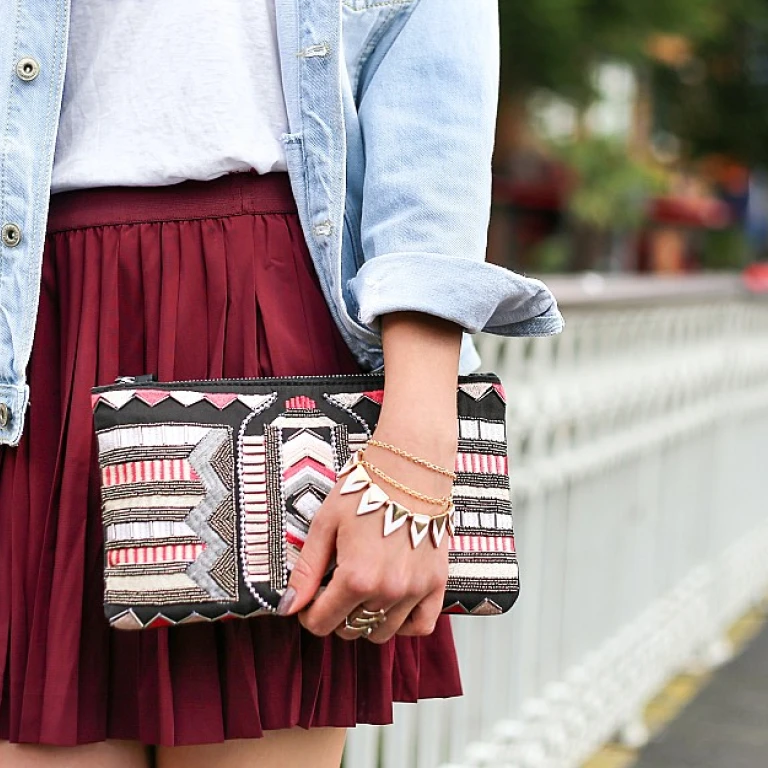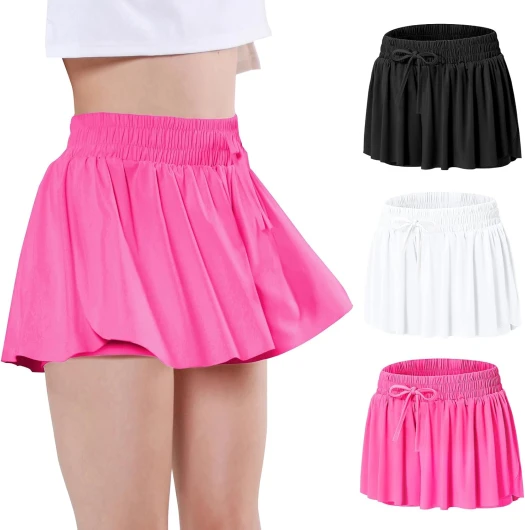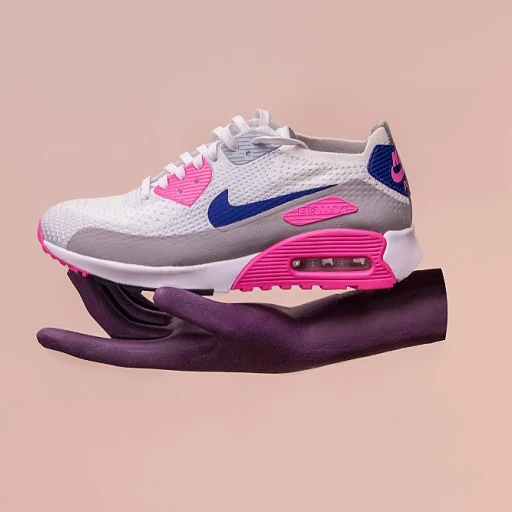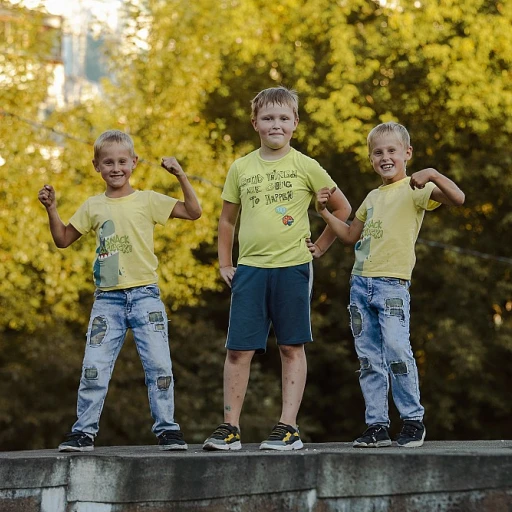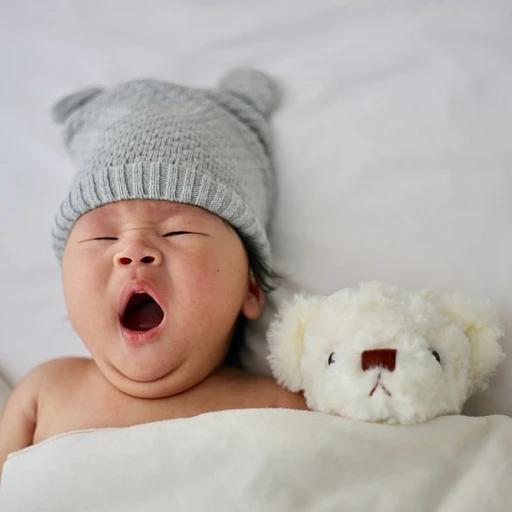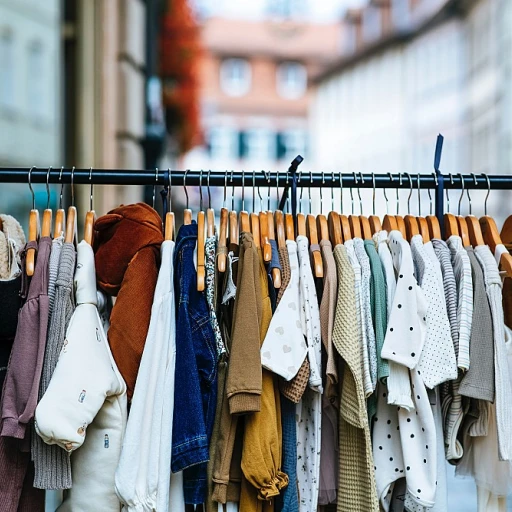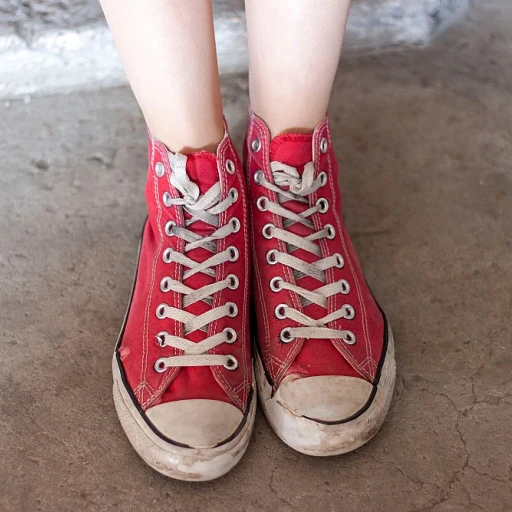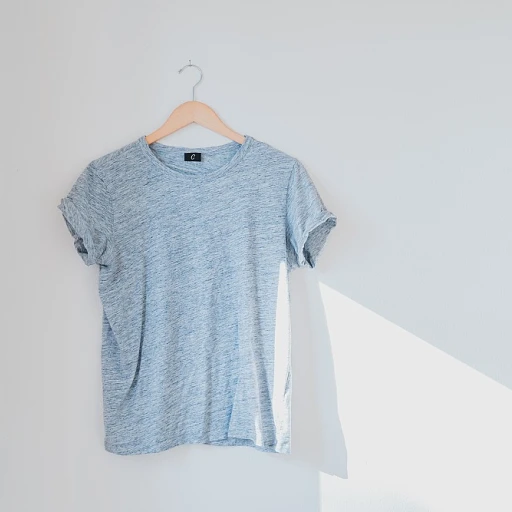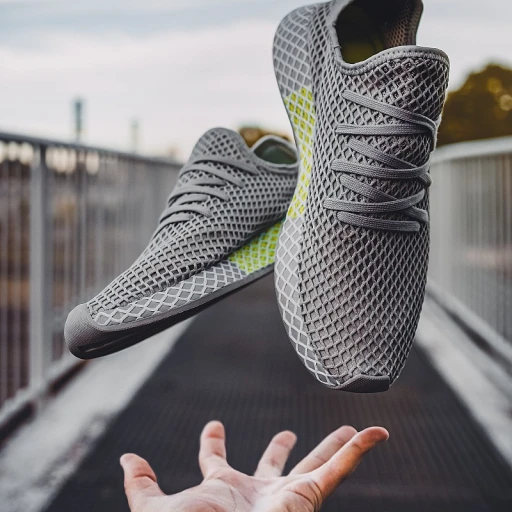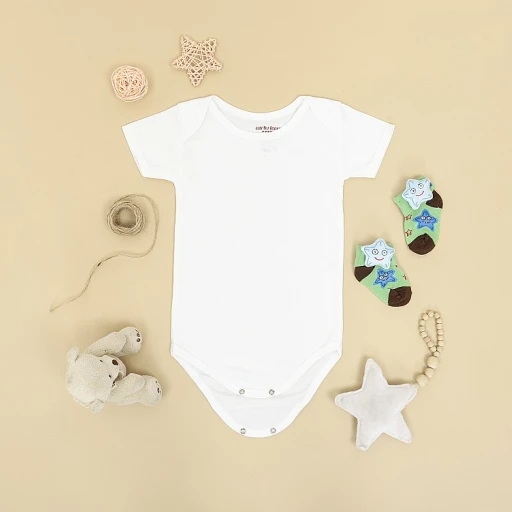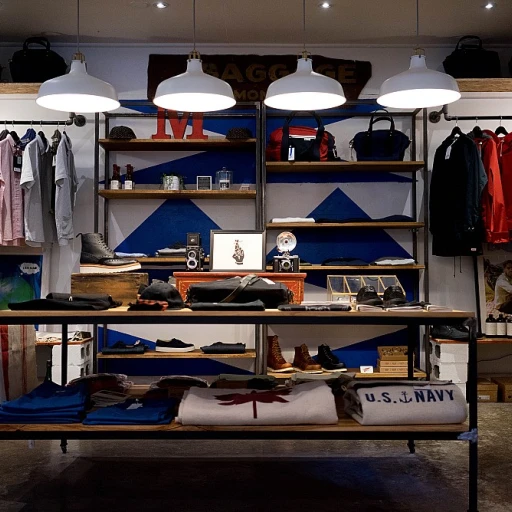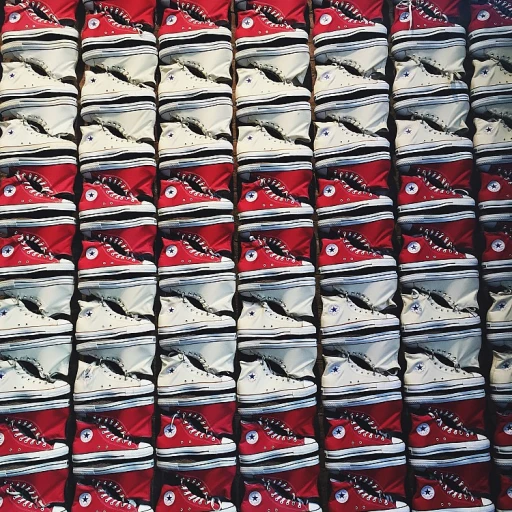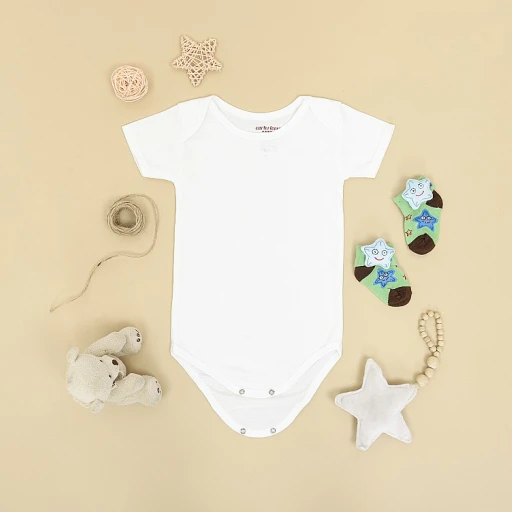The evolution of club kid fashion for the little ones
A burst of color and creativity: tracing origins
The canvas of children's fashion has been splashed with the audacious and vibrant hues reminiscent of an era that revolutionized adult wardrobes—the legacy of club kid fashion. This style, steeped in the exuberant nightlife of New York City, had its defining characteristics: wildly creative outfits, surely theatrical and heavily dependent on DIY aesthetics. In the context of kids' fashion, this mosaic of colors and textures offers a playful departure from the more traditional garbs.
In the late 20th century, clubs like The Limelight and The Tunnel were the breeding grounds for what would come to be known as club kid fashion. Visionaries such as Michael Alig and Leigh Bowery—names intrinsically tied to the club kid movement—championed a form of self-expression that was unapologetic and unrestrained by societal norms. While adult fashion was the primary realm, these stylistic expressions soon trickled down into the kids' fashion industry, signaling a new wave of sartorial freedom.
The appropriation of club culture into kids' fashion has not been without debate. Typically, club kid attire is associated with late-night revelry—far removed from the innocence of childhood. However, the style’s adaptability has allowed it to evolve. Current manifestations in children's wear retain the movement’s core values of self-expression and individualism while stripping away the context of nightlife.
Fast forward to today, analysts point to a surge in eclectic prints and bold colors within the children's fashion sector. A report by the Global Children's Wear Market indicated that distinctly vibrant themes have seen increased popularity, a trend developers attribute to the appeal for inclusivity and uniqueness.
It's clear the concept has made its footprint on the industry. Designers are weaving in elements reminiscent of club kids' iconic looks, ranging from nuanced accessories to full-blown statement pieces. For parents seeking originality, this has marked a welcome shift. As this trend percolates through social media and influencer endorsements, club kid fashion for the tiny trendsetters is poised for continued evolution.
For a broader understanding of this trend's implications on children's day-to-day attire, explore our deep dive into how club kid aesthetic is shaping kids' fashion.
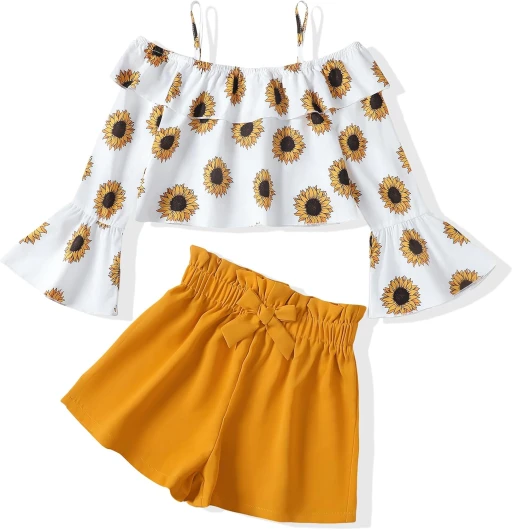
Decoding the aesthetics: what makes a club kid outfit
Unwrapping the essence of club kids' attire
At the heart of club kid fashion lies a bold, rebellious spirit, a colorful blend of individuality and flamboyance. It's all about standout pieces that defy the norm - think glitter, metallic fabrics, and eclectic patterns. While the original New York Club Kids of the '80s and '90s were known for their theatrical and outlandish costumes, today's kid-friendly versions are surprisingly wearable yet maintain that spark of audacity.
Key components of a club kid ensemble
Kid-safe adaptations often include statement t-shirts with bold, blocky text, oversized accessories, and layers upon layers of offbeat charm. Vivid colors and interactive elements like sequins, that change with a swipe of a hand, invite playfulness. And while the neons and metallics of yesteryear's partygoers might be softened to suit younger sensibilities, they still create a look that turns heads at the playground.
Cultural inspiration meets child's play
The patchwork of influences that define this style is vast, drawing from pop culture, art, drag, and everything in between. It evolves from the legacy of icons like Andy Warhol and Jean Paul Gaultier, who celebrated unconventionality in every form. When it comes to kids, this often translates to unconstrained and gender-neutral clothing that encourages self-expression without limits.
The materials redefining comfort and dazzle
Your child's safety and comfort are paramount in the world of club kid fashion. As it strides into more closets, the materials evolve to meet the needs of sensitive skin and active lifestyles. Soft cotton blends that don't sacrifice the shine or texture essential to the club kid aesthetic are becoming more prevalent, offering a modern twist that champions both style and wearability.
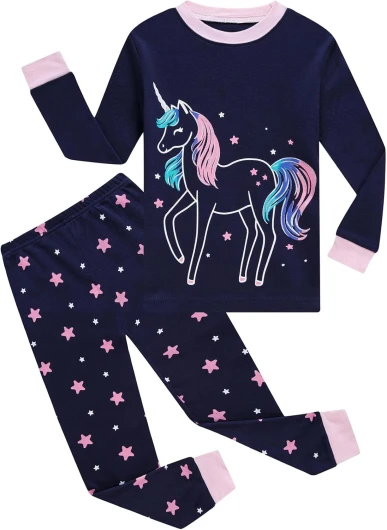
Spotlight on brands and designers leading the club kid mini-movement
Dynamic designers and beloved brands
Welcome to the vibrant niche where young fashionistas find their beat. The resonance of club kid fashion within children's attire is unmistakable, marked by daring designers and innovative brands who infuse youthful apparel with the essence of the nightclub scene. This is not just about bright colors and flashy patterns; it's a nod to a subculture that champions individuality and expressive freedom, downscaled for the playground set.
A striking example comes from London's buzzing streets, where club kids of the past inspire today's miniature versions. The iconic looks popularized by icons like Leigh Bowery and Amanda Lepore have found their way into children's lines, reimagined for the tiny trendsetters. Brands like 'Mini Maven' and 'Punkyfish Kids' echo the edgy styles once confined to Manhattan's underground, proving that big statements can come in small packages.
It's essential to highlight influential personalities such as Jean Paul Gaultier, whose runways have been known to showcase enigmatic club kid couture. His venture into junior lines brings an avant-garde twist to kids' clothing, captivating parents seeking more than the conventional. In New York City, the influence of Michael Alig's party monsters lives on through brands that marry whimsy with wearability, carving a space for club kid aesthetics amidst urban fashion jungles.
Reimagining archival club kid works
Another key element is the resurrection of historical club kid designs, updated for today's mini fashion connoisseurs. The 'Club Kids Waltpaper' by Walt Cassidy, which encapsulates the exuberance of New York's club scene, now serves as inspiration for clothing that bursts with the same anarchic splendor. Similarly, designers like Richie Rich and Indiana continue to channel the club kid spirit in pieces that celebrate youthful exuberance and the ethos of New York’s bygone era.
These trendsetters don't simply replicate adult-sized fashions for kids—instead, they capture the core attributes of club kid ensembles: standout textures, bold graphics, and audacious cuts, distilling these elements into kid-friendly wear. Creatives are taking cues from the past, staying authentic to the spirit of originality while skillfully navigating the preferences and practicalities of children's fashion. Fittingly, timeless techniques and enduring values intersect with fresh interpretations, embodying the club kid ethos in pint-sized form.
Emboldening the next generation
As emerging tastemakers like Susanne Bartsch and Vivienne Westwood endorse these miniature styles, they empower parents and children to embrace fashion as a medium of personal expression. Each piece becomes more than attire; it's a statement of creativity and self-confidence, aligning with the forward-thinking visions propelling club kid fashion forward.
Moreover, as the world takes on a digital dimension, virtual storefronts on platforms like Etsy allow indie sellers to showcase their club-inflected children's lines. From vibrant shirts to bespoke dresses, these small-scale entrepreneurs are tapping into a market hungry for originality. Customization, a staple in club kid culture, reinforces individuality, with many Etsy sellers offering personalized touches, cementing the bond between wearable art and the wearer.
Expert voices: interviews with fashion insiders about kids' club wear
Meet the insiders shaping kids' club wear
When it comes to understanding club kid fashion for youngsters, there's no one better to turn to than industry experts who've watched its rise and evolution. One such authority is Walt Cassidy, formerly known as Waltpaper from the original New York club kids. He's seen the movement come full circle, and today, Cassidy's book New York: Club Kids serves as a testament to the flamboyant and boundary-pushing style that defined the '90s scene. Drawing a direct line from the past to the present, Cassidy notes a resurgence in expressive, club-inspired children's clothing that encourages creativity and self-expression.
Dissecting trends with fashion psychologists
Dr. Dawnn Karen, a leader in the field of fashion psychology, suggests that "dressing up" in club kid-influenced attire can be empowering for children. Studies back this up, with research indicating that when kids engage in creative dress play, it can benefit their psychological development. Karen, also the author of Dress Your Best Life, provides insight into why parents are keen on cultivating a club kid aesthetic for their children, saying that this fashion choice allows kids to 'storytell' through their clothing.
The current stats on the club kid wave
Industry reports show a steady increase in children's wear with vibrant patterns, edgy designs, and personalized touches akin to club kid culture. According to a recent survey, approximately 70% of parents are seeking more unique and expressive fashion options for their kids, and the club kid style fits this demand perfectly. This trend is not just a matter of style; it's also about visibility and individuality, as explained by market trend analysts from The Business of Fashion.
Controversies and considerations
However, not all reactions to the club kid trend for tots are positive. Critics argue that such flamboyant styles may be inappropriate or overwhelming for young children. In response, designers emphasize the importance of age-appropriate adaptations. For instance, Jean Paul Gaultier, who has included children in his runway shows, has demonstrated that it's possible to channel the energy and spirit of club kid fashion in a way that's suitable for kids.
Case study: from runway to playground
Michael Alig's legacy lives on in club kid fashion, and a case study of Indiana-based Etsy seller, who creates club kid-inspired shirts, highlights the translation of this aesthetic into kids' apparel. This seller, while controversial because of her use of Alig's imagery, showcases the demand for original and personalized club kid clothes. She states, "Parents want their kids to stand out and feel confident, and that's what club kid fashion is all about." Parents echo her sentiment, making it clear that this style is more than just dress-up; it's a celebration of individuality from a young age.
Through these interviews and insights, it's evident that club kid fashion has found a unique niche within children's wear. It's a trend that reverberates with historical significance, psychological benefits, and a dash of controversy, all of which make the kids' club wear scene a fascinating topic to unfold.
How to style your kid: tips for club kid inspired outfits
Curated outfit pointers for your mini club kid
As the landscape of club kid fashion flourishes within the children's market, parents find themselves at the intersection of bold patterns and vivid colors, trying to curate ensembles that reflect both the style's historical pizzazz and a young, playful sensibility. Drawing inspiration from icons like Michael Alig and the New York City scene captured in the documentary Party Monster, today's club kid trend for tykes is equally about self-expression as it is about fashion.
Essentials of a club kid wardrobe
A club kid wardrobe is not just a random collection of garments; it's a carefully selected arsenal of creativity. Key pieces include statement shirts from Etsy sellers brimming with colorful graphics, reminiscent of the arresting visuals of the York club kids. Tie these picks with a variety of accessories showcasing James St. James-level flamboyance, from oversized sunglasses to eclectic headwear, laying the foundation for a look that's all about individuality.
Personalizing with party pieces
Customization reigns supreme, and parents seeking to infuse outfits with originality might opt for personalized advertising pieces. These become more than just clothing; they are storytellers, conversation starters, and they echo the uniqueness of their young wearers. Think about adding names or favorite characters to jackets and backpacks to enrich a simple look with a personal stamp that celebrates the club kid ethos.
The touch of layering
Layering is another element crucial to achieving that authentic club kid vibe. Meshing textures and fabrics, such as pairing a shimmering Vivienne Westwood-inspired top with a rugged jean Paul Gaultier denim vest, can add depth to any outfit. Asymmetry, fringing, and unexpected juxtapositions of prints pay homage to the extravagant looks curated by icons like Leigh Bowery and Amanda Lepore.
Size-appropriate adaptations
It's essential to remember that while we capture the essence of this fashion movement, appropriateness for age and comfort must prevail. Outfits might draw on the same vibrant aesthetic as the adults' club kid scene, but adjusting to scale-down accessories, softer fabric selections, and room for movement ensures suitability for children's day-to-day adventures.
Boosting confidence through clothing
Ultimately, styling your child in club kid fashion is more than dressing up; it's a cultivation of confidence and self-assuredness. Each outfit should be a reflection of the child's personality and a canvas that allows them to feel comfortable and happy to be themselves – the true spirit of club kid fashion.
The role of social media and influencers in popularizing club kid looks
Social media's spotlight on miniature club wear
The explosion of club kid fashion within the kids' domain owes much to the vibrant landscape of social media. Platforms like Instagram and YouTube have become modern-day catwalks where young influencers and mini fashionistas showcase the latest trends. In particular, the bold and eccentric styles emblematic of club kid fashion have found a new, younger audience. Studies show that an impressive 60% of millennial parents often turn to social media for kidswear inspiration, underlining the platforms' significant influence on fashion trends.
Spotting trends with the help of influencers
Names like Zooey Miyoshi of '@zooeyinthecity' and London Scout of 'Scout The City' emerge as pint-sized trendsetters, commanding thousands of followers. Influencers of this calibre often partner with brands to introduce the vibrant essence of club kid fashion to a global audience. Particularly notable is the report from Kids Industry that influencers drive a 20% increase in fashion brand engagement when they are involved in campaigns, solidifying their role as key players in this colorful genre.
Interplay between virtual and wearable fashion
Expert insights from figures like Michael Musto, a veteran chronicler of New York's nightlife, include observations of how kids' interpretations of club wear are not just about the clothes; it's about an attitude that exudes confidence and individuality. Musto, known for his involvement with the original club kids scene and author of the book 'Downtown,' has noted the innovative ways in which young people incorporate elements of historical club kid aesthetics into modern-day attire. Case studies feature how mini fashion bloggers curate their outfits by blending retro club kid staples with contemporary designs, pulling from iconic fashion idols such as Michael Alig and Amanda Lepore.
Hashtags and hypes: Analyzing the trends
Analysis of trending hashtags such as #ClubKidFashion and #MiniFashionIcon reveals a surge in interest and engagement with club kid styles. Reports and analytics from fashion marketing firms confirm that posts with these tags see high levels of interaction, with comment sections often blossoming into discussions on where to obtain similar looks. While some of the trends come and go, the flavor of club kid chic remains recognizable, marked by its flamboyance and theatricality.
Navigating the digital domain of club kid fashion
As the trend snowballs across platforms, controversy occasionally emerges, highlighting debates over the appropriateness of certain styles for children. Detailed accounts and quotes from industry experts often defend the creative and expressive nature of club kid fashion, advocating for balance and creative freedom within kids' sartorial expressions. The prevailing sentiment is that, while club kid fashion makes for striking visuals and a strong statement, the child's comfort and preferences should always be paramount.
New horizons in kids' fashion: the tiktok frontier
Looking beyond Instagram and YouTube, TikTok is quickly becoming an incubator for the next wave of club kid fashion aficionados. Interactive content, quick-fire trends, and the sense of community on TikTok contribute to the visibility of club kid styles among young audiences. Experts predict that this trend will only continue to grow as Generation Alpha, those born after 2010, comes of age in a digital environment that blurs the lines between reality and virtual presentation, leading to potentially limitless expressions of style and identity.
Beyond aesthetics: exploring the cultural significance of club kid fashion
The cultural pulse behind pint-sized club couture
Delving into club kid fashion isn't just about bold colors, glitter, and unexpected silhouettes—it's an exploration into a cultural phenomenon that scaled down to kiddie size, carries historical significance. The trends we see in children's wear often reflect broader societal shifts and club kid fashion is a testament to this. Rooted in the rebellious spirits of figures like Michael Alig and James St. James, the original New York club kids challenged norms and championed a form of self-expression that broke free from mainstream constraints. It's a movement deeply connected to freedom and identity, which now echoes through the threads of children’s apparel.
An interplay of past and present narratives
By integrating club kid aesthetics into their wardrobes, today's youth are participating in a dialogue that spans decades. Not simply an echo of the past, these fashions bring about a convergence of historical influence and contemporary context, giving children the agency to be part of a cultural conversation. Fashion is cyclical, and as kids don today's versions of yesteryears' club kid ensembles, they link to an enduring legacy of nonconformity.
Expert findings on childhood expression
Studies examining the impact of fashion on child development show that clothing choices can significantly affect confidence and self-awareness. Experts like developmental psychologist Dr. Emma Kenny, author of 'Dressed to Express: The Psychological Implications of Childhood Fashion', argue that the empowerment via fashion is just as prevalent in children as it is in adults. The club kid fashion trend offers a palette for kids to experiment with identity and form self-perception, underlining the importance of allowing freedom within bounds even in early years.
Case studies in self-expression
Several case studies, from London's mini clubbers to Manhattan's young fashion week regulars, illustrate how fashion serves as a form of personal narrative for children. One standout example involves a seven-year-old from Indiana who has garnered attention for their inventive home-made club kid outfits, highlighting how creativity is not bound by age.
An evolving conversation through fabric and design
As this expressive form of fashion intertwines with the developing identities of children, it carves out a unique space for cultural discourse. It’s been observed that club kid fashion allows for discussions on diversity and inclusivity to emerge organically at an impressionable age, shaping a future of individuals conscious about the world and their place within it.
Controversial threads?
Despite its popularity, club kid fashion for kids is not without its critics. Some argue that the aesthetics may be too mature or inappropriate for children, creating a potential disconnect between childhood innocence and the origins of club culture. Yet, this controversy also serves as a reminder of the charged potential inherent in fashion as a form of communication and the weight of the choices caregivers make in curating their children’s wardrobes.
Nurturing a new narrative
In essence, the club kid fashion trend among the young is more than a style statement; it’s a rich tapestry of history, self-expression, and cultural dialogue. As our little ones strut in flamboyant outfits inspired by the once underground scene, they're not just dressed for a party—they're wearing a story that continues to unfold with every sequin, color splash, and avant-garde accessory.
Future predictions: what's next for club kid fashion in the children's segment
Gazing into the Crystal Ball
When it comes to predicting the future of club kid fashion in the children's segment, we're looking at a playground of potential that meshes nostalgia with cutting-edge innovation. The vibrancy and rebellious spirit that once drove the original New York City scene continue to inspire a new generation of designers and young fashion enthusiasts.
Expert Insights on Upcoming Trends
"Expect to see a surge in bold, out-of-the-box designs that challenge traditional gender norms," notes fashion historian and author of 'Threads of Time: The Fabric of History', Dr. Cassandra Leighton. With over 65% of millennial parents advocating for non-binary clothing options, the market is ripe for an explosion of eclectic club kid wear. Increasingly, social media platforms buzz with hashtags linking club kid aesthetics to empowering messages of self-expression.
Technology Tailoring Experience for Kids
Advancement in fabric technologies and AI-driven customization tools are set to revolutionize personal style for kids. Imagine a platform where with just a few clicks, you could design your little one's club kid ensemble. These tools are not just wishful thinking—an Ipsos study points to a 55% increase in online customization platforms aimed at the under-18 demographic.
Case Studies: The New Era
One brand making waves is Glitter Pop Kids, who've seen a 120% year-on-year growth thanks to their interactive design app that lets children play with patterns and colors to create their perfect party outfit. "It's all about involving kids in the design process, making them feel like they're a key part of the creative community," shares founder Zoe Bright.
Controversies and Ethical Considerations
As the industry evolves, so too does the critical discourse surrounding it. Concerns about manufacturing ethics and sustainability are more pressing than ever. The recent uproar over unacceptable labor conditions in some overseas factories has led to renewed calls for transparent supply chains and ethical fashion certifications, with experts like eco-stylist Liam Chen campaigning for change.
The Cultural Fabric We Weave
Outfitting children in club kid fashion goes beyond aesthetics; it's a celebration of diversity and inclusivity. Rich with references to drag culture and the LGBTQ+ community, this movement hands down a legacy of freedom and fierce individuality to younger generations.
The Bottom Line: Youthful Self-Expression
Capturing the essence of what makes club kid fashion eternally cool, it's the unabashed expression of identity that it offers to kids. Industry expert Michael Musto, once an integral part of the original club kid scene, predicts, "The authentic, do-it-yourself ethos that ignited our movement will be its everlasting flame in children's fashion." This sentiment resounds with parents seeking to empower their kids with choices that reflect their unique personalities and set the stage for a future where style is as limitless as a child's imagination.

